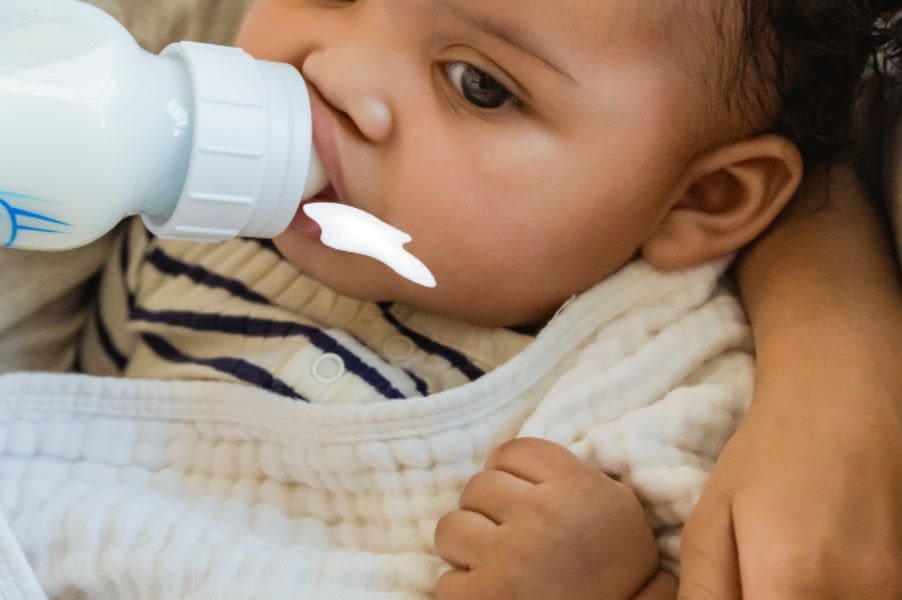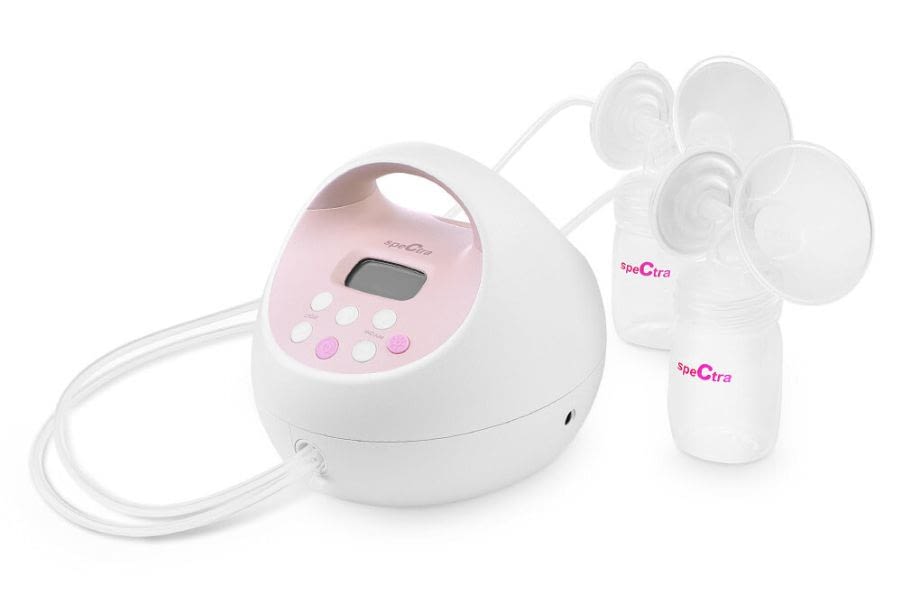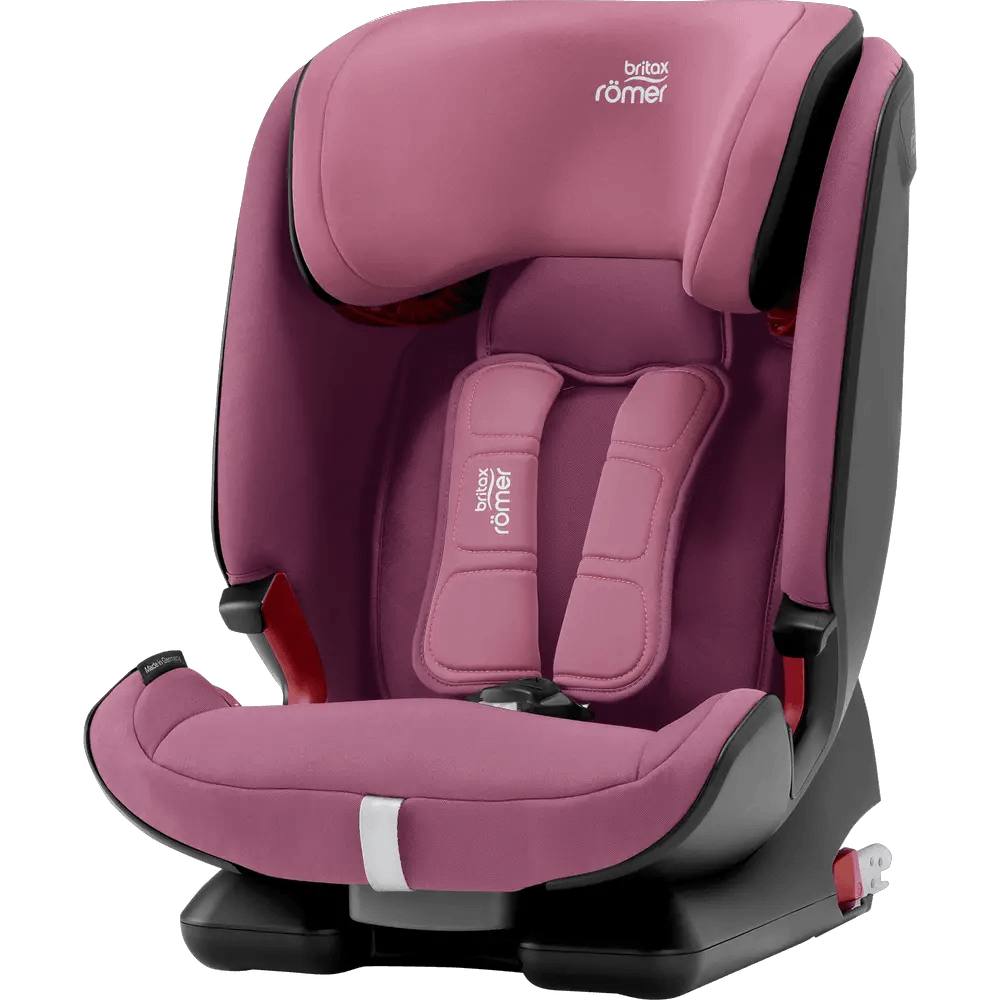As parents, we ensure that our little one is well cared for and receives the best quality nutrition. To make it possible, having a reliable breast pump with clean parts is key – but how often to replace pump parts?
Read on to discover exactly what you must do to keep all pumping system components working optimally. So you can continue providing the highest quality nutrition for your baby!
Related: 9 Best Breast Pumps For Working Moms (2024 Reviewed)
Understanding the importance of replacing breast pump parts regularly
Regular replacement of breast pump parts is crucial for maintaining the efficiency and hygiene of the pump. Over time, wear and tear can decrease suction strength, potentially impacting milk supply and your overall milk expression process.
Furthermore, frequent use can create tiny, unobservable crevices where milk residue can accumulate, fostering an environment for bacterial growth. Therefore, replacing parts like the valves, membranes, and tubing regularly is crucial to ensure the safety and health of your baby and your comfort during the pumping process.
|
Replacement Kits |
Images |
Check Price |
|
Spectra breast pump replacement parts
|
 |
Buy On Amazon |
|
Ameda Pump Parts Replacement |
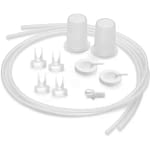 |
Buy On Amazon |
|
Lansinoh Replacement Parts |
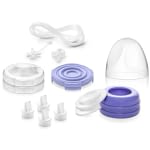 |
Buy On Amazon |
|
Elvie Stride Replacement Parts |
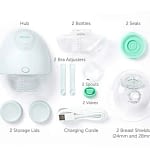 |
Buy On Amazon |
|
Evenflo Feeding Replacement Parts Breastfeeding Kit |
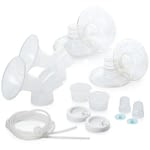 |
Buy On Amazon |
Identifying how often to replace pump parts?
What pump parts need to be replaced? Recognizing which and when it’s time to replace your breast pump parts can vary depending on the frequency of use and the specific part in question.
Be sure to consult the manufacturer’s guidelines for optimal care and maintenance of your breast pump model. While all breast pump parts are critical in ensuring efficient milk expression, certain ones require more frequent replacement.
When To Replace Breast Shields
Breast Shields or Flanges don’t typically need routine replacement. They should be replaced immediately if cracked, warped, or damaged.
When To Replace Shield Connectors
Shield connectors are vital to your breast pump; maintaining them is essential for optimal operation. They generally have a longer lifespan than other parts; replacement is usually necessary every six months.
However, if you notice any signs of wear and tear or damage sooner, it’s better to replace them immediately to ensure the pump’s efficiency and hygiene.
When To Replace Breast Pump Valves
These small yet crucial components help to create suction and should be replaced every two to three months or more frequently if you’re pumping several times a day.
When To Replace Valve Membranes
These delicate, thin parts create the necessary seal for suction and should be replaced more frequently roughly every two to eight weeks.
How often to replace duckbill valves?
Duckbill valves are an integral part of breast pumps that play an essential role in creating suction. These components are subjected to constant pressure and usage, leading to wear and tear over time.
Generally, duckbill valves should be replaced every 60 to 90 days if you’re pumping occasionally. However, replacing them every 30 to 60 days is advised if you’re a frequent pumper. Always remember, if you notice a decrease in the suction or if the duckbill valves appear torn, immediate replacement is necessary to preserve the quality of the milk expressed.
When To Replace Tubing
The tubing only needs to be replaced if it gets damaged or milk gets inside. If you notice any changes in your pump’s performance, it could signal that one or more parts need replacing.
How often to replace backflow protector spectra
Backflow protectors play a crucial role in preventing milk from getting into the tubing and motor of the pump, ensuring the hygiene and longevity of your breast pump. These components typically don’t come into direct contact with breast milk unless there is a backflow incident.
Therefore, replacing backflow protectors every six months under regular use is recommended. However, mothers who pump multiple times a day may need to consider replacing them more frequently, every three months. As always, be vigilant for any visible signs of abnormalities detected.
Adherence to these replacement timelines and inspection routines will help maintain optimal pump performance and hygiene, safeguarding the health of both mother and baby.
When To Replace Milk Collection Bottles
Milk collection bottles are crucial components of a breast pump. They collect and store the expressed milk, directly linking it to your baby’s nutrition. If you notice discoloration, these bottles should be replaced approximately every six months or sooner.
If you frequently use and sterilize the bottles, the plastic may cloud or crack sooner, indicating a need for earlier replacement. Pay close attention to the bottle markings as well – if they begin to fade, it might be time for a new set.
It will ensure accurate measurement of milk. Always remember that using well-maintained and undamaged equipment is key to providing your baby with the safest and healthiest nutrition.
Remember, these are general guidelines, and you should always refer to your breast pump manufacturer’s instructions for specific replacement recommendations. Inspecting all pump parts for wear or damage will help maintain optimal pump performance and hygiene.
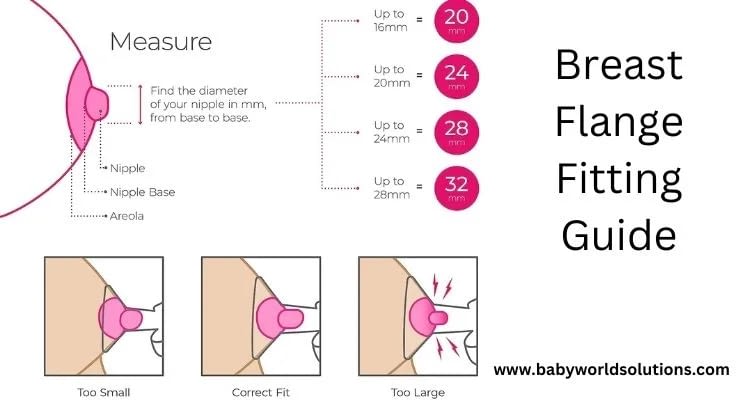
Related: How Long Does Breast Milk Last After Warming?
Reasons: Why do breast pump parts need to be replaced?
Breast pump parts need to be replaced for several reasons:
Maintaining Pump Efficiency
Over time, wear and tear on pump parts can reduce the device’s effectiveness. For instance, valves and membranes can wear out, leading to a decrease in suction. Regular replacements ensure your pump works at its optimum level, enabling you to express milk efficiently.
Safety and Hygiene
Breast milk is a source of nutrition for your baby, so it’s essential to keep the milk clean and safe. Used pump parts can become a breeding ground for bacteria and mold, contaminating the milk. Regularly replacing parts significantly reduces this risk.
Preserving Milk Quality
The state of your pump parts can affect the quality of the milk you express. Worn-out parts may lead to air exposure, altering the milk’s nutritional content. Replacement of such parts helps preserve your breast milk’s integrity and nutritional quality.
Preventing Damage to the Pump
Allowing parts to wear out can result in more severe damage to the pump. For instance, a worn-out valve can cause the motor to work harder, potentially leading to burnout. Frequent replacement of parts helps to prevent this kind of damage, extending the life of your pump.
Comfort and Ease of Use
Using worn-out parts can make pumping uncomfortable, which may discourage regular use. Replacing parts like breast shields or flanges ensures a comfortable fit, making the pumping experience more pleasant and encouraging consistent use.
Read Also: Why Does My Breast Milk Look Watery- 7 Possible Reasons
When to replace breast pump parts: Manufacturer’s replacement schedules
As noted above, it’s a good idea to check what your breast pump manufacturer recommends regarding when to replace pump parts. While the guidelines above are a good start, your pump parts may require a different timeline, depending on the brand.
To find out what your pump requires, check the instruction manual. Below are what manufacturers recommend for some popular breast pumps.
Elvie Stride Replacement Parts Guidelines
How often to replace pump parts Elvie? It is a trendy breast pump known for its silent operation and convenience. Here are the Elvie pump replacement parts manufacturer’s recommendations in the Elvie instruction manual for replacing parts:
- Breast Shield/Flange: It is advisable to replace the breast shield every 3-6 months or sooner if the fit feels uncomfortable or you notice any signs of wear and tear.
- Valves: These are ideally to be replaced every 2-3 months.
- Bottles and Storage Containers: While these parts are durable, they should be replaced approximately every six months or if they become discolored, cracked, or damaged.
- Tubing: The tubing should be replaced if mold or moisture is detected inside.
Lansinoh Replacement Parts Recommendation
Lansinoh pumps are well-known for their durability and quiet operation. When to replace Lansinoh pump parts? Here are the manufacturer’s guidelines for replacing parts:
- Breast Shields/Flanges: They should be replaced every 3-6 months to ensure optimal performance and hygiene.
- Valves: These are vital for keeping the pump operating effectively and efficiently. They should be replaced every 2-3 months or if you notice a decrease in suction.
- Tubing: The tubing should be replaced if any issue is detected.
Ameda Pump Parts Replacement Guidelines
Ameda breast pumps are recognized for their versatility and high-quality performance. Here is what the manufacturer suggests for maintaining and replacing parts:
- Breast Shields/Flanges: These parts come directly with your skin and milk. To ensure optimal performance and hygiene, replace the breast shield every 3-6 months or sooner if discomfort or signs of wear and tear are noticed.
- Valves: Valves should be replaced every 2-3 months or if a decrease in suction is observed.
- Tubing: A replacement schedule of approximately every 12 months is typically recommended.
Spectra breast pump replacement parts guidelines
How often to change pump parts Spectra? Spectra, a famous breast pump manufacturer, recommends specific replacement timelines for their pump parts to ensure optimal performance and hygiene.
when to replace spectra parts? While individual use may affect the lifespan of components, a general guide is as follows:
- Duckbill Valves: Replace every 1-3 months, depending on the frequency of use.
- Backflow Protectors: Replace them every 3-6 months or sooner if they become clouded or misshapen.
- Tubing: Should be replaced if there’s visible moisture inside the tubes after a pumping session or every 3-6 months as preventive maintenance.
- Breast Shields/Flanges: These typically do not wear out with regular use and need only be replaced for comfort or fit reasons.
Remember to inspect your parts regularly for signs of wear and tear, and always adhere to Spectra’s recommendations to ensure your breast pump’s safety, comfort, and effectiveness.
When to replace pump parts Medela
For how often to replace Medela valvesMedela breast pumps, the recommended replacement schedule is similar to the above of other brands like Spectra, Ameda pump parts, and the first years replacement parts.
Taking care of your breast pump parts
In addition to knowing how often should you replace pump parts, there are a few simple steps you can take to ensure the longevity of all the parts.
- Always ensure that any tubing or valves used in expressing milk are thoroughly sterilized before and after each use.
- Storing parts correctly after cleaning is also essential – keep them in a dry place away from direct sunlight.
- Finally, inspect your parts regularly for any signs of damage or wear and replace individual components as needed.
By following these guidelines and replacing breast pump components as necessary, you can rest assured that your baby gets the best nutrition possible with a safe and clean pumping system.
Read Also: Best Bottle Warmer For Comotomo Bottles In 2023
Advantages of regular breast pump part replacement
Regularly replacing pump parts offer a multitude of benefits:
- Ensures Optimal Performance: Regularly replacing worn-out parts helps maintain the pump’s efficiency, providing maximum milk expression.
- Promotes Hygiene and Safety: Replacing parts reduces the risk of milk contamination and bacterial growth, providing a safer feeding experience for your baby.
- Preserves Milk Quality: Fresh, well-maintained parts help maintain the nutritional quality of the milk, benefiting your baby’s health.
- Increases Lifespan of the Pump: Regular maintenance and part replacement can extend the lifespan of your breast pump.
- Enhances Comfort: Replacing parts like breast shields/flanges ensures a comfortable fit, making the pumping experience more pleasant.
- Prevents Damage: Regular replacement helps prevent more serious damage to the pump over time.
- Saves Time: A well-maintained pump operates more quickly and efficiently, saving you valuable time.
- Reduces Stress: Knowing your pump is in good working order can reduce stress and worry, enhancing the overall breastfeeding experience.
- Cost-Effective: Regular part replacement can prevent the need for more costly repairs or even a full pump replacement.
- Peace of Mind: Lastly, regular replacement provides peace of mind knowing that you’re doing everything possible to ensure your baby’s health and nutrition.
How to clean and maintain a breast pump?
Cleaning and maintaining your breast pump involves several steps crucial to ensuring its longevity and your baby’s health.
- Disassemble the Pump: After each use, remove the pump components that come into direct contact with breast milk. This typically includes the flanges, connectors, valves, and membranes.
- Rinse Immediately: Rinse each component under cold running water to remove residual milk. Avoid using hot water immediately, as it can cause protein in the milk to stick to the surface.
- Clean Each Component: Clean each part thoroughly with warm, soapy water. You may use a soft brush dedicated solely for this purpose. Rinse thoroughly afterward.
- Sterilize: Depending on the manufacturer’s guidelines, certain components may need to be sterilized daily. Place the components in a pot of boiling water for approximately ten minutes, then allow to air dry. Alternatively, use a microwave steam bag or a dedicated sterilizer if the manufacturer recommends it.
- Air Dry: Allow all parts to air dry on a clean towel or drying rack. Don’t use a towel to rub or pat parts dry, as this can transfer germs to the components.
- Reassemble and Store: Once all the parts are arid, reassemble the pump. Store it in a clean, dry place until the next use.
- Clean the Pump Motor: If your pump has a motor, clean it with a damp cloth. Avoid getting water in the tubing or motor, as this can damage the unit.
Following these steps meticulously will ensure that your pump is clean, safe, and ready for subsequent use. Remember, a well-maintained pump is crucial for practical milk expression and your baby’s health.
Free Replacement Pump Parts Through Insurance
As a mother who has used a breast pump, I’ve personally benefited greatly from my insurance’s provision of free replacement parts. After the birth of my first child, I used a pump several times a day, which led to substantial wear and tear on the parts over time. The cost of replacements quickly increased, and I felt the strain on my budget.
Then I discovered that my health insurance covered the cost of replacement parts. I could order new valves, membranes, and even breast shields through my insurance by submitting a simple request.
Not having to worry about the cost every time a part needed replacement was a relief. Not only did I save money, but I also ensured that my pump worked efficiently and safely, protecting the quality of my milk and my comfort during pumping sessions.
This experience emphasized to me the importance of understanding the details of one’s health insurance policy. I encourage all mothers who pump to investigate if their insurance offers similar benefits. It’s a great way to maintain the performance of your pump while also saving money.
1 Visit today


